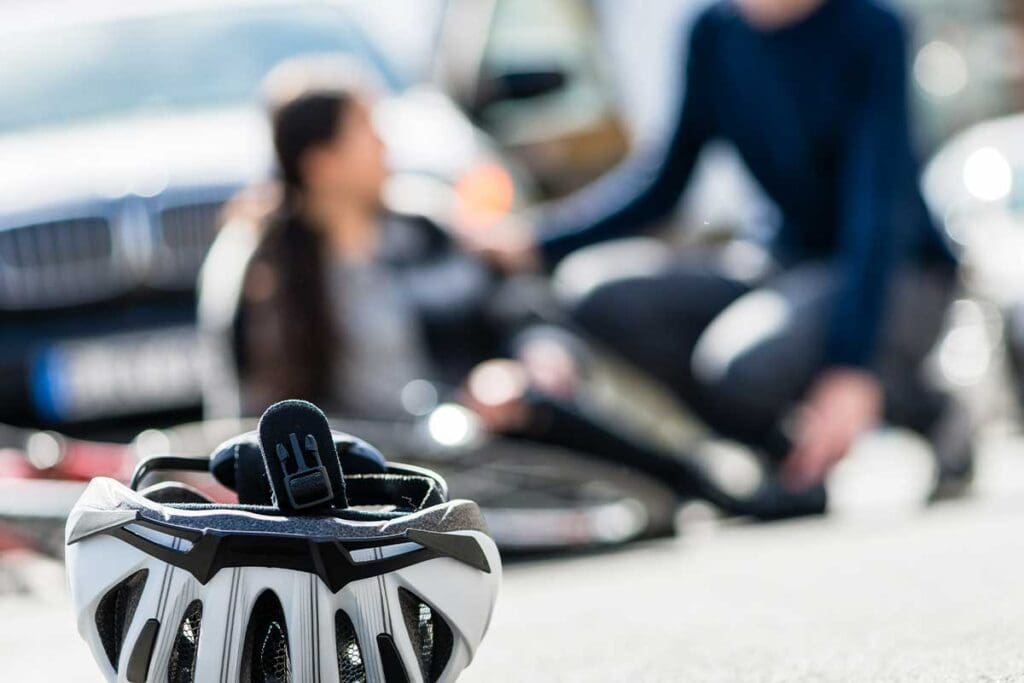Key Takeaways
Fault in bicycle accidents depends on negligence, which is determined by examining traffic laws and evidence.
Drivers, cyclists, or even pedestrians can be found at fault, depending on who acted carelessly.
Common causes include distracted driving, failure to yield, and unsafe road conditions.
Collecting evidence, such as police reports and photos, is essential for proving fault.
Consulting a personal injury attorney ensures your rights are protected and strengthens your case.
Understanding Fault in Bicycle Accidents
Fault in bicycle accidents is determined based on negligence, which refers to someone failing to act with reasonable care. This negligence can apply to drivers, cyclists, pedestrians, or even municipalities responsible for road maintenance.
To prove fault, four elements of negligence must be established:
- Duty of Care: The at-fault party had a legal obligation to act safely.
- Breach of Duty: They violated that duty by acting carelessly.
- Causation: Their actions caused the accident.
- Damages: The cyclist suffered injuries or financial losses as a result.
Common Scenarios: Who May Be at Fault?
1. Drivers at Fault
Motorists are often responsible for bicycle accidents when they fail to follow traffic laws or share the road safely with cyclists. Examples include:
- Distracted Driving: Texting, talking on the phone, or not paying attention to the road.
- Failure to Yield: Not yielding to cyclists at intersections or crosswalks.
- Dooring Accidents: Opening a car door into a cyclist’s path without checking.
- Speeding or Unsafe Passing: Driving too close to cyclists or ignoring bike lanes.
Example: A driver turns right without checking their mirrors and strikes a cyclist in the bike lane. In this case, the driver would likely be found at fault.
2. Cyclists at Fault
While drivers often bear responsibility, cyclists must also follow traffic laws and act responsibly. Cyclists can be found at fault if they:
- Run Stop Signs or Red Lights: Ignoring traffic signals puts both the cyclist and others at risk.
- Ride Against Traffic: Cyclists must ride in the same direction as traffic flow.
- Fail to Use Hand Signals: Not signaling turns or lane changes can lead to accidents.
- Ride Recklessly: Swerving between lanes or riding in prohibited areas.
Example: A cyclist runs a red light and collides with a vehicle that has the right of way. In this case, the cyclist may be held responsible.
3. Pedestrians at Fault
Pedestrians can also contribute to bicycle accidents when they act carelessly. Examples include:
- Jaywalking: Crossing the street outside designated crosswalks.
- Walking in Bike Lanes: Blocking paths reserved for cyclists.
- Sudden Movements: Stepping into a cyclist’s path without warning.
Example: A pedestrian suddenly steps into a bike lane, causing a cyclist to swerve and crash. The pedestrian’s negligence may make them partially or fully responsible.
4. Municipalities or Road Conditions
In some cases, poor road design or maintenance contributes to a bicycle accident. Examples include:
- Potholes or Uneven Pavement: Hazardous surfaces that cause cyclists to lose control.
- Lack of Bike Lanes: Failing to provide safe spaces for cyclists.
- Poor Signage or Lighting: Missing traffic signals or poorly lit intersections can lead to collisions.
Example: If a pothole causes a cyclist to crash, the city or local government may be held liable for failing to maintain the road.
How to Prove Fault in a Bicycle Accident
To determine fault and build a strong case, gathering evidence is key. Follow these steps:
- File a Police Report:
- Call the police immediately after the accident.
- The officer will document the scene, interview witnesses, and provide an official report.
- Take Photos and Videos:
- Document the accident scene, vehicle damage, injuries, and road conditions.
- Capture any traffic signs, signals, or hazards that may have contributed to the accident.
- Gather Witness Statements:
- Speak to bystanders and collect their contact information.
- Witness statements can provide unbiased accounts of what happened.
- Seek Medical Attention:
- Even if injuries seem minor, see a doctor to document your condition.
- Medical records link your injuries to the accident and help prove damages.
- Consult an Attorney: A personal injury attorney can investigate the accident, gather evidence, and determine liability.
Shared Fault: Understanding Comparative Negligence
In some cases, both parties share responsibility for the accident. States follow different rules for handling shared fault:
- Comparative Negligence: Your compensation is reduced based on your percentage of fault. For example, if you’re 20% at fault, your settlement is reduced by 20%.
- Contributory Negligence: In a few states, if you’re found even 1% at fault, you cannot recover compensation.
Example: If a cyclist swerved unexpectedly but a speeding driver couldn’t stop in time, both may share blame. The cyclist may still recover partial compensation.
What Compensation Can Cyclists Recover?
If you’ve been injured in a bicycle accident caused by someone else’s negligence, you may be entitled to compensation for:
- Medical Bills: Hospital visits, treatments, medications, and rehabilitation.
- Lost Wages: Income lost due to missed work during recovery.
- Property Damage: Repairs or replacement for your bicycle and gear.
- Pain and Suffering: Compensation for physical pain, emotional distress, and reduced quality of life.
Conclusion
Determining fault in a bicycle accident can be complex, as it often involves multiple parties and careful evaluation of evidence. Whether it’s a negligent driver, reckless cyclist, careless pedestrian, or poorly maintained road, understanding your rights is critical to recovering compensation.
If you’ve been injured in a bicycle accident, Settlement Ally can help you navigate the claims process, prove fault, and fight for the compensation you deserve. Contact us today for a free consultation and let us be your advocate on the road to recovery.

